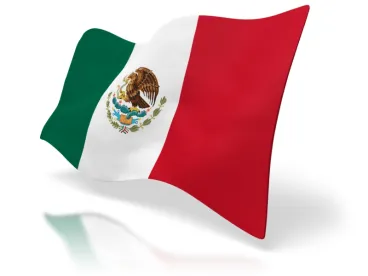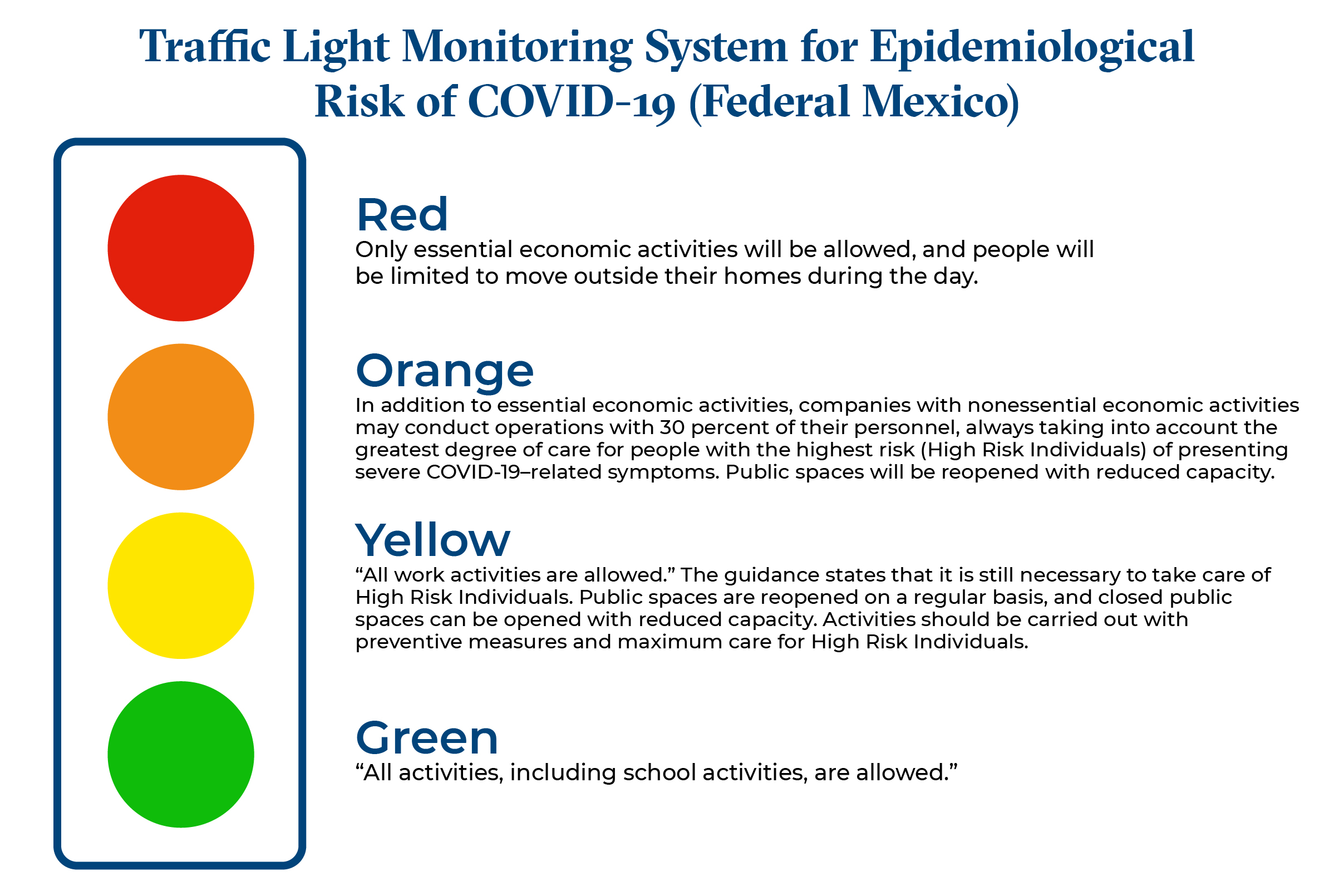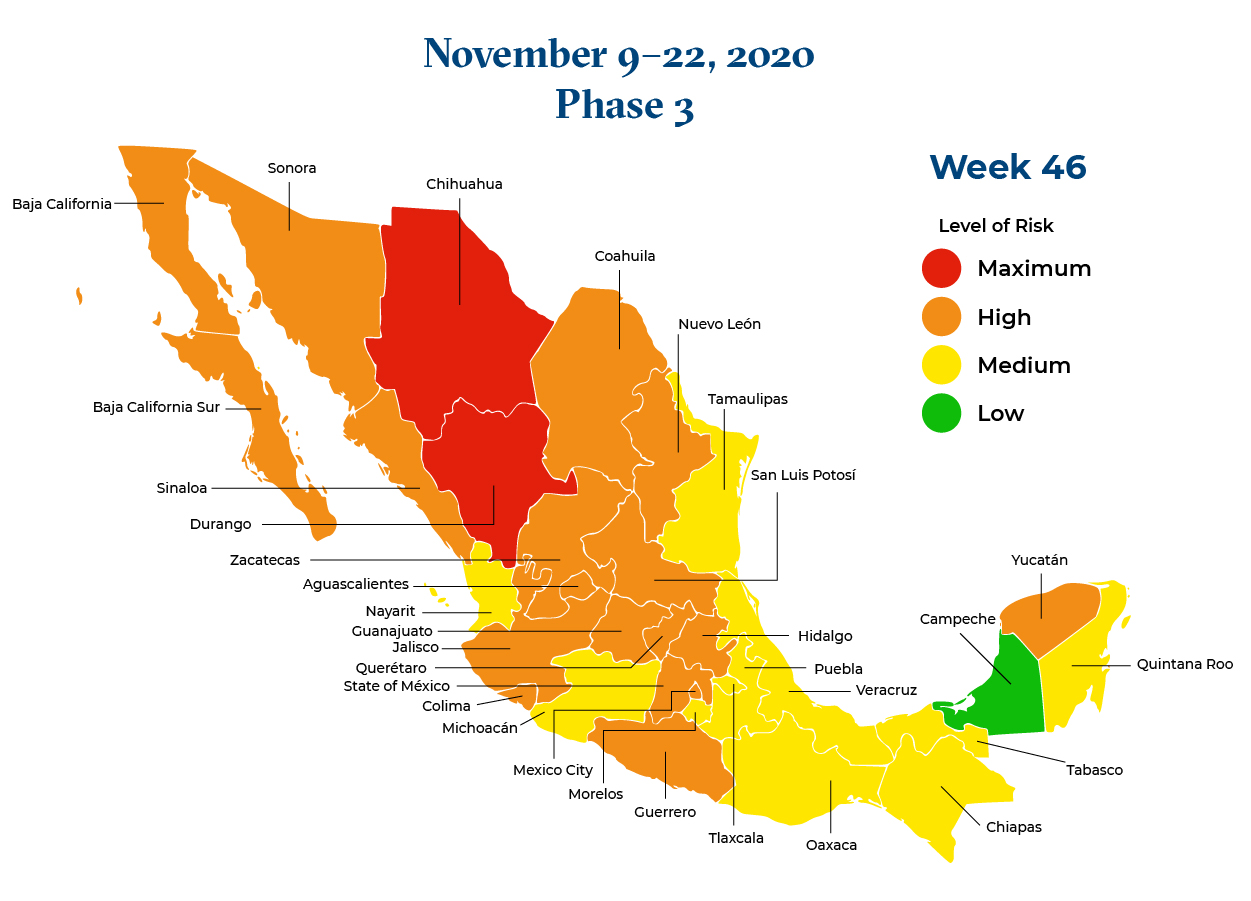In June 2020, the federal government of Mexico established a “traffic light” monitoring system in response to the COVID-19 pandemic in order to place appropriate health and safety restrictions on certain activities and alert residents of the epidemiological risks in each of the country’s 32 states. The bimonthly monitoring system is aligned with health protocols to guide Mexico’s states through the country’s phased reopening plan. Below is a map for the period of November 9, 2020, to November 22, 2020, indicating the COVID-19 risk level in each of Mexico’s 32 states.
This chart presents the traffic light status of each state, and, as applicable, variations between federal and local traffic light statuses based on publications of the federal Ministry of Health and status reports provided by each state.
In this edition of the traffic light report, we can observe that 2 states are in red status, 11 states are in yellow status, and 18 states are in orange status. Only one state, Campeche, is in green status.
Both Chihuahua and Durango had been in orange status in October 2020, but both have returned to red status. Jalisco has activated the emergency button mechanism, which indicates a greater risk of contagion and therefore tighter restrictions on certain activities.
Chihuahua. A restriction schedule was established from 7:00 p.m. to 6:00 a.m. during the week and from Friday night (7:00 p.m.) mobility within the state is limited. Likewise, during restricted hours, only a new classification of essential activities may operate. These essential activities relate to health, safety, food production and sale, administration of justice, and civil protection, among other essential matters. During unrestricted hours, the work centers authorized to do so can continue to operate, complying with (i) capacity, (ii) sanitary protocols, and (iii) measures established in official state decrees from Monday to Friday and on Saturdays and Sundays. Measures will be reviewed by health authorities every 15 days.
Jalisco. Certain activities that represented a greater risk of contagion for the population were suspended for 14 days (from October 30, 2020, to November 13, 2020). These restrictions affected social, recreational, cultural, religious, sports, and certain economic activities taking place during the week and on weekends, from 7:00 p.m. to 6:00 a.m. The restrictions did not impose a total stoppage of activities, but rather a partial closure of nonessential activities.
It is important to consider that cases and hospital occupancy rates in various states of the country continue to increase, so it is expected that more states will return to red status and/or that greater restrictions will be imposed.




 />i
/>i



